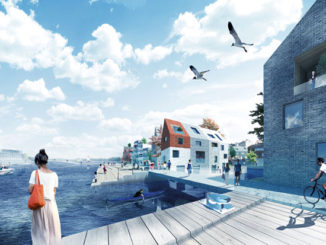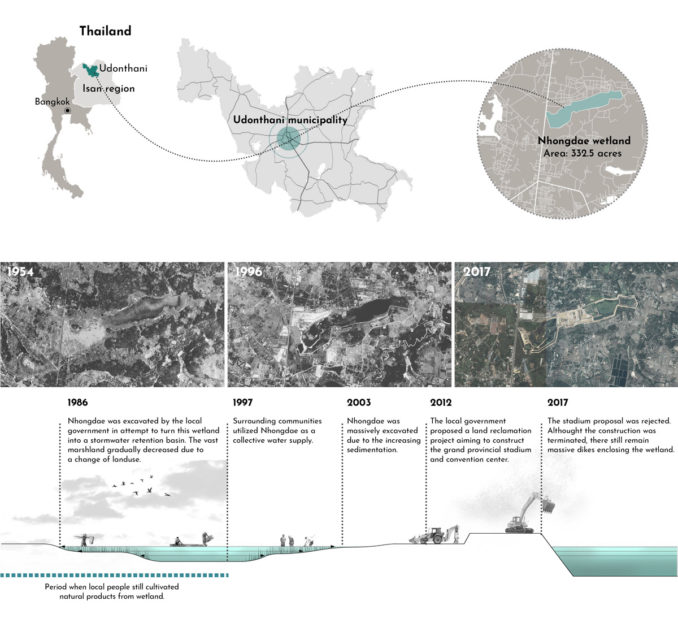
Located in the fringe of Udonthani city, Isan region in the northeastern part of Thailand. Nhongdae was a unique wetland with natural marsh pond and puddles that homes to native aquatic lives. The seasonal wet-dry landscape characters, influenced by water dynamic, micro climate and an undulating topography, provided biodiversity richness for environment and ecosystem services.
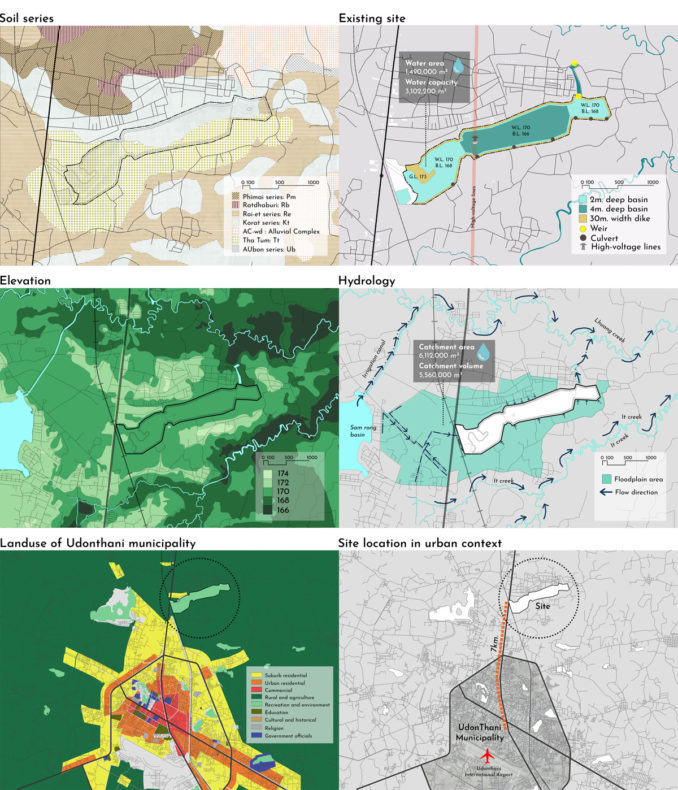
Along with having a high ecological value, this wetland also held both cultural and historical significance for local people. This once productive wetland has been a major source of food, a natural product supply to generate incomes and traditional activity space for earlier generations. People way of life intimately intertwined with this wetland.
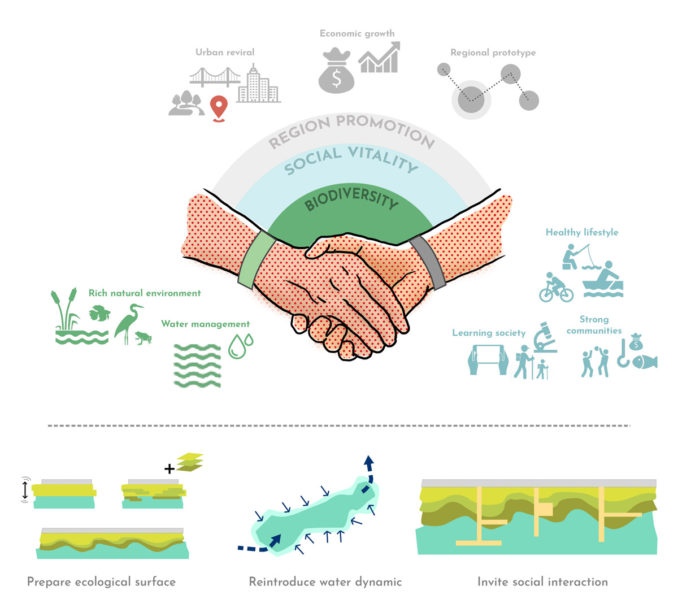
As the urbanization continuously and rapidly takes progress in Udonthani city, Nhongdae is one of the effected wetlands in an urban area that are threatened and transformed for various urban activities. The decreasing of wetlands in conjunction with fast growing development plan lead the city to flooding issue, lacking of green area for recreation together with loss of cultural roots and sense of belonging, for people who have lived in those areas for generations.
This project aims to revival and redefine a “Wet–dry relationship” to envisions how wetland and humans can live harmoniously within the developing urban context. Nhongdae wetland park adopts two major strategies: the ecological surface preparation and the social invitation.
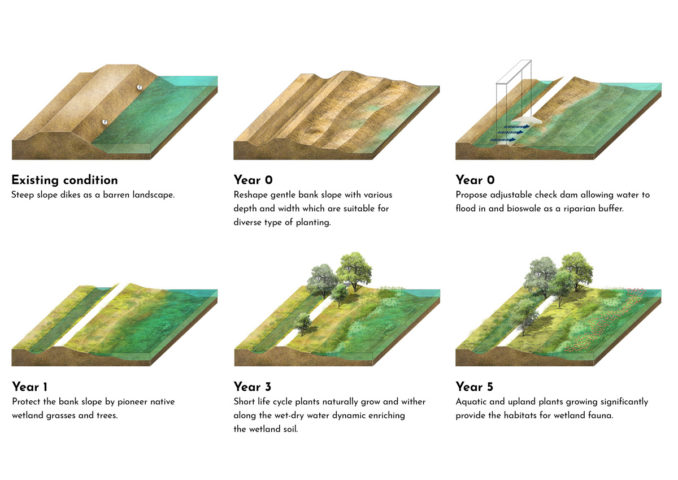
The ecological surface preparation strategy focuses on restoring the native wetland ecosystem based on existing site condition, hydrological flow analysis and water capacity consideration for flood protection. First implementation is reshaping the landform to become slightly undulating to support an establishment of native aquatic lives which will naturally emerge after the pioneer plants. Second, replacing engineering culverts around the site by bio swale and adjustable check dams, installed between the swale and wetland, to reintroduce natural water dynamic and improve water management system.
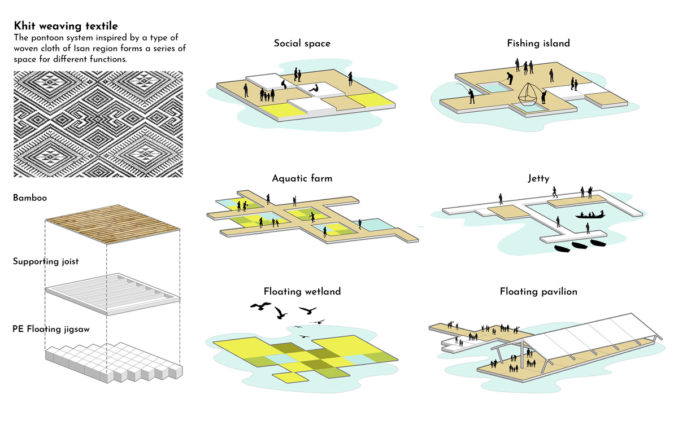
After the revival of the wetland completed, the social invitation strategy will be implemented to provide wide-ranging opportunities for humans to return and interact with nature.
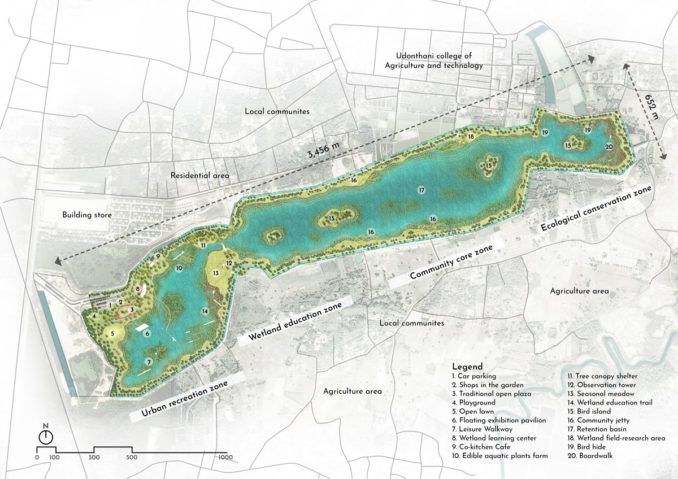
The wetland park is divided into four main zones connected by various type of circulations. The urban recreation zone is filled with leisurely programs which are suitable for urban people lifestyle such as jogging trails, shops in the garden, Kayak jetty, exhibition pavilion and the seasonal meadow for festive events.
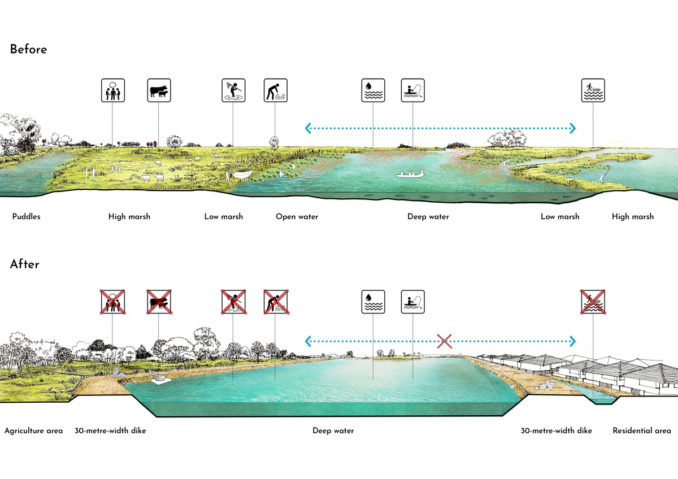
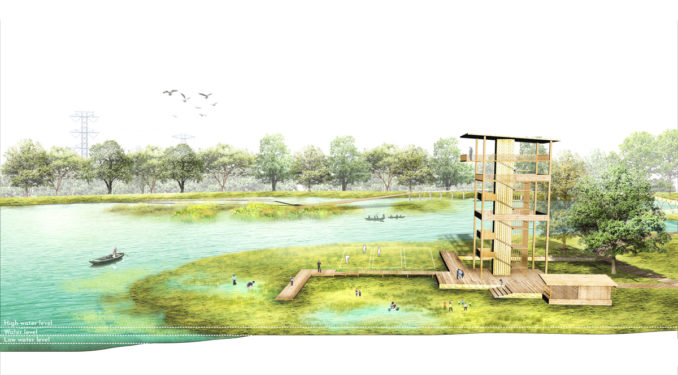
The wetland education zone, set in between the recreation area and the core area of local, emphasizes on interactive learning programs to provide natural experiences and the awareness of wetland value for visitors including floating nature trails, wetland outdoor lab, edible aquatic plants farm.
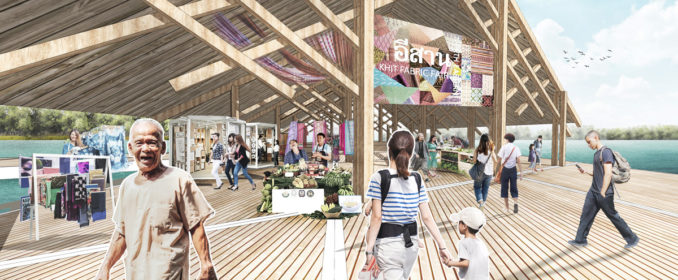
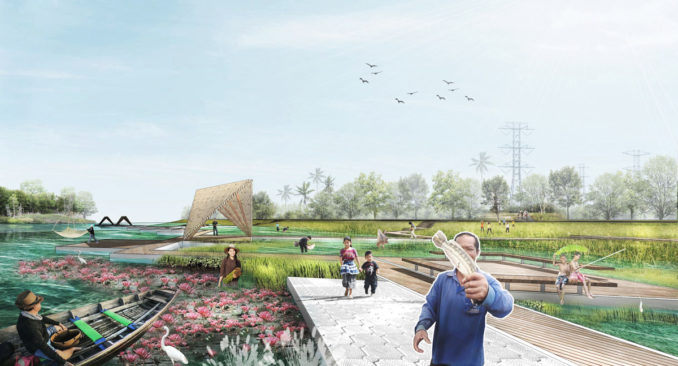
The community core zone becomes the collective source of natural product again with proper facilities to support local livelihood. Natural benefits will give a good incentive to maintain and protect their valuable landscape. Wetland learning programs will carry on from the education zone to the proposed field-research area for local agricultural college nearby.
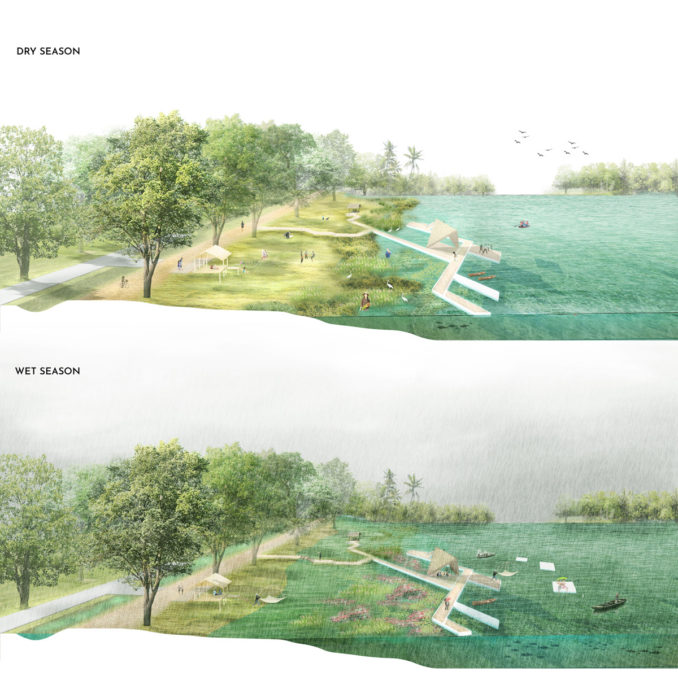
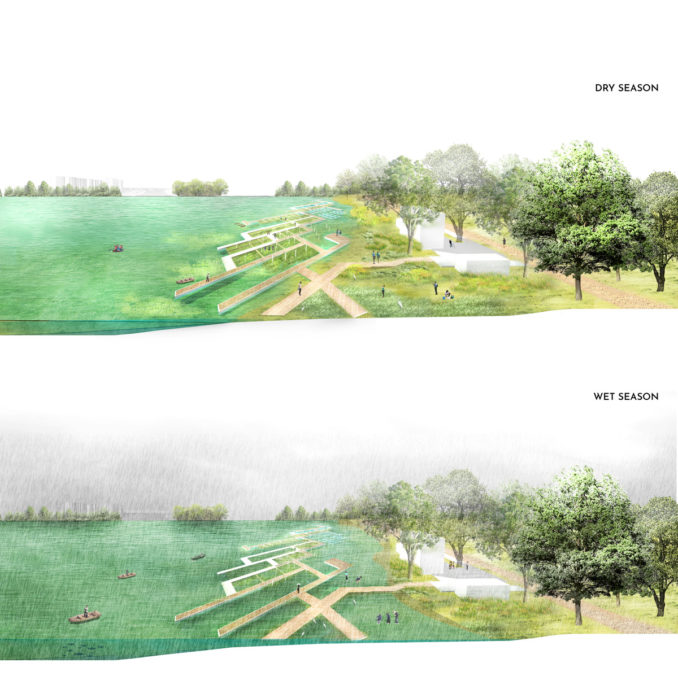
Located in the area most remains natural and serene, the ecological conservation zone is contributed to native species habitats and migratory bird sanctuary where is only accessible for ecotourism.
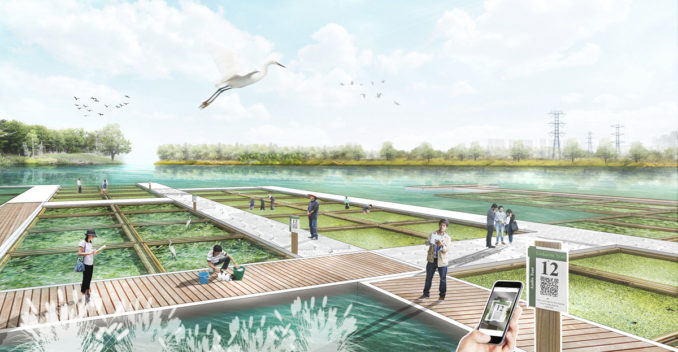
The genius loci feature is expressed through pontoon system. Assembled from floating jigsaw units which appear like a local fabric pattern, the pontoons form a series of space for different function that can be utilized in every season. This feature can symbolize the adaptation of human to a change of nature and, in directly, reduce environmental impacts from heavy construction in wetland.
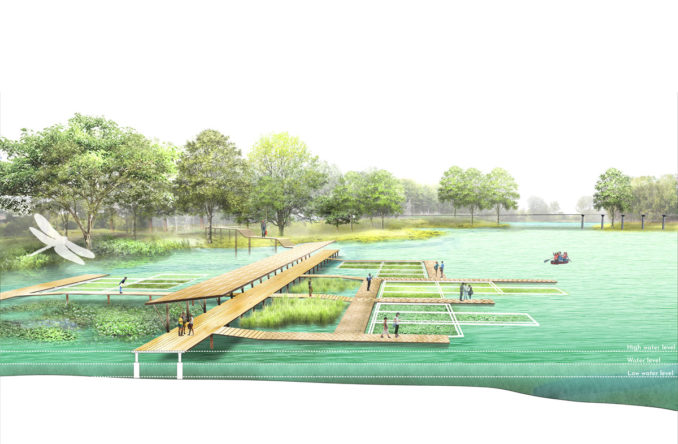
Ultimately, Urbanization and a change of the way of life will keep continuing. Nhongdae wetland park seeks to be the exemplar project of wetlands restoration in developing provinces of Isan region where the living marsh and urban lives are reconciled.
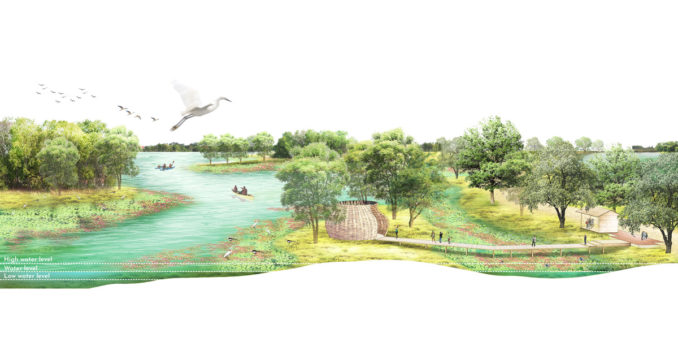
A Wet-Dry Relationship: When the living wetland and urbanites are reconciled
Student: Nissa Phloimontri, Bachelor degree of Landscape Architecture, Chulalongkorn University.
Advisor: Suebsiri Srithanyarat
Location: Udonthani, Thailand
Image Credits: Nissa Phloimontri


